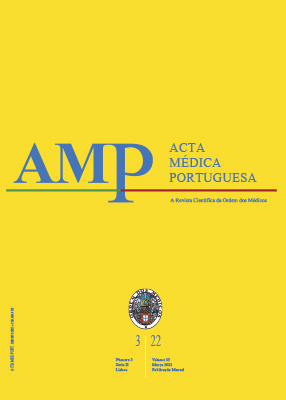What Leads to a Patient Refusal for Ambulatory Surgery? A Logistic Regression Prediction Model Based on a 5-year Retrospective Analysis of Patients with Abdominal Wall Hernia
DOI:
https://doi.org/10.20344/amp.15733Keywords:
Ambulatory Surgical Procedures, Logistic Model, Patient SelectionAbstract
Introduction: Ambulatory surgery has proven benefits in patient wellbeing and cost reduction in healthcare systems. However, some patients referred for ambulatory surgery are refused and directed instead towards inpatient care, which generates several drawbacks. The reasons for this refusal have not been yet studied. The aim of this study is to identify, retrospectively, significant variables associated with patient refusal for ambulatory surgery and develop a mathematical tool able to predict with strong accuracy those who will be rejected.
Material and Methods: Over a 5-year period (2014 - 2018), all patients that underwent abdominal hernia repair in our hospital in an inpatient setting, and that had been previously refused for ambulatory surgery, were analysed for a total of 94 variables. A multivariate logistic regression model was developed to identify risk factors associated with refusal using data from 136 patients (65 refused vs 71 accepted). A prediction index for refusal in ambulatory surgery - IRAS - was derived and tested (n = 62 patients).
Results: The risk index included five significant risk factors: type 2 diabetes mellitus [OR 14.669 (2.982; 72.154)], physical status [OR 49.155 (15.532; 155.555)], prior malignancy [OR 14.518 (2.653; 79.441)], prior abdominal surgery [OR 3.455 (1.006; 11.866)] and usage of antiplatelet agents [OR 25.600 (4.309; 152.066)]. All risk factors were associated with a high risk of refusal (OR between 3.455 for history of prior abdominal surgery and 49.155 according to the American Society of Anaesthesiologists physical status classification). Defining five points as the maximum IRAS score that predicts suitability for ambulatory surgery resulted in a positive predictive value of 93.55% and negative predictive value of 87.10%.
Conclusion: IRAS is a useful tool that can contribute to reduce time to surgery and improve patients’ quality of life.
Downloads
Downloads
Published
How to Cite
Issue
Section
License
Copyright (c) 2021 Acta Médica Portuguesa

This work is licensed under a Creative Commons Attribution-NonCommercial 4.0 International License.
All the articles published in the AMP are open access and comply with the requirements of funding agencies or academic institutions. The AMP is governed by the terms of the Creative Commons ‘Attribution – Non-Commercial Use - (CC-BY-NC)’ license, regarding the use by third parties.
It is the author’s responsibility to obtain approval for the reproduction of figures, tables, etc. from other publications.
Upon acceptance of an article for publication, the authors will be asked to complete the ICMJE “Copyright Liability and Copyright Sharing Statement “(http://www.actamedicaportuguesa.com/info/AMP-NormasPublicacao.pdf) and the “Declaration of Potential Conflicts of Interest” (http:// www.icmje.org/conflicts-of-interest). An e-mail will be sent to the corresponding author to acknowledge receipt of the manuscript.
After publication, the authors are authorised to make their articles available in repositories of their institutions of origin, as long as they always mention where they were published and according to the Creative Commons license.









